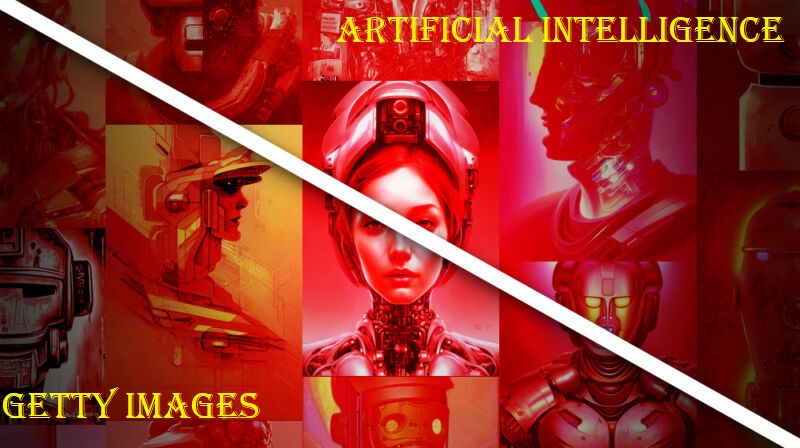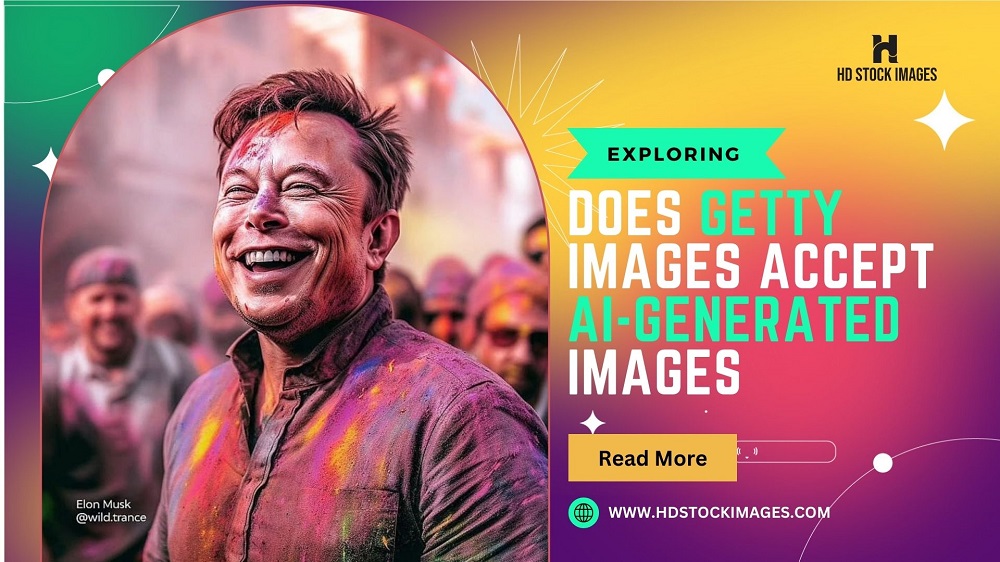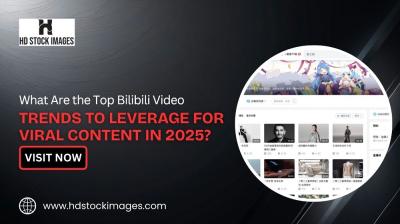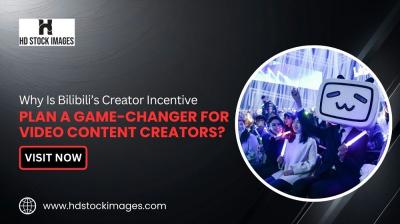1. Introduction Of Getty Images Accept AI-Generated Images
Also Read This: How to Download Photos from Getty Images Without Watermark: Legal and Ethical Ways
2. Getty Images and AI-Generated Content

| Criteria | AI-Generated content on Getty Images |
| Technical Requirements | High-resolution images Optimal file formats and compression |
| Legal Considerations | Ownership and copyright verification Obtaining model and property releases |
| Ethical Guidelines | Avoiding deceptive or misleading content Respect for cultural sensitivities and diversity |
| Metadata and Keywording | Accurate and relevant metadata Proper categorization and discoverability |
| Quality and Creativity | Ensuring originality and uniqueness Evaluating artistic value and creativity |
| Challenges and Concerns | Potential misuse and deepfake prevention Protecting authenticity in visual storytelling |
| Future Implications | Impact of AI on the creative industry Getty Images' role in shaping the future Evolving trends in stock imagery |
Also Read This: What Happens When an Image is Rejected on Alamy? Can It Be Resubmitted?
3. Submission Criteria for AI-Generated Images on Getty Images
Technical Requirements
- High-Resolution Images: AI-generated images submitted to Getty Images must meet specific resolution standards to ensure high-quality reproduction.
- Optimal File Formats and Compression: Images should be saved in appropriate file formats with minimal compression to maintain image integrity.
Legal Considerations
- Ownership and Copyright Verification: Contributors must confirm their legal ownership of the AI-generated images and grant Getty Images the necessary rights to distribute them.
- Obtaining Model and Property Releases: If the AI-generated content includes recognizable individuals or private properties, proper model and property releases are required for commercial use.
Ethical Guidelines
- Avoiding Deceptive or Misleading Content: AI-generated images should not contain false or misleading information that could deceive viewers.
- Respect for Cultural Sensitivities and Diversity: Contributors must be mindful of cultural representations and avoid offensive or harmful depictions.
Metadata and Keywording
- Accurate and Relevant Metadata: Contributors should provide accurate and relevant metadata, including descriptions and keywords, to aid in discoverability and categorization.
Quality and Creativity
- Ensuring Originality and Uniqueness: AI-generated images should be original works, and contributors must avoid submitting duplicate or identical content.
- Evaluating Artistic Value and Creativity: While AI plays a role in generation, the artistic merit of the content is still important for consideration.
Challenges and Concerns
- Potential Misuse and Deepfake Prevention: Getty Images strives to prevent the misuse of AI-generated content for unethical purposes, including deepfakes or misinformation.
- Protecting Authenticity in Visual Storytelling: Maintaining the integrity of visual storytelling is crucial, and efforts are made to prevent the spread of misleading narratives.
Future Implications
- Impact of AI on the Creative Industry: Getty Images recognizes the transformative potential of AI technology and explores how it impacts the creative industry.
- Evolving Trends in Stock Imagery: As AI technology advances, the trends and demands in stock imagery may change, influencing the acceptance criteria.
- Getty Images' Role in Shaping the Future: Getty Images plays an active role in adapting to new technological advancements and shaping the future of AI-generated content.
Also Read This: Adobe Stock Best Sellers: Unveiling the Top Performing Images
4. Quality and Creativity in AI-Generated Images
Originality and Uniqueness
Getty Images places great emphasis on the originality and uniqueness of AI-generated images. Contributors must avoid submitting content that is identical to existing images in the database or widely available elsewhere. Originality ensures that the visual content adds value to Getty Images' diverse collection.Technical Excellence
The technical quality of AI-generated images is essential for commercial usage. Images should meet high-resolution standards and demonstrate superior image clarity, sharpness, and color accuracy. This ensures that the content is suitable for various applications, including printing and digital use.Artistic Merit
Despite being generated by AI algorithms, the artistic value of the content matters. Getty Images assesses the aesthetics, composition, and visual storytelling aspects of AI-generated images to ensure they resonate with creative buyers and fulfill their unique visual needs.Context and Relevance
The context in which AI-generated images are used is essential. Content should be relevant and appropriate for its intended purpose and target audience. This consideration ensures that the images are effective in conveying the desired message.Creativity in AI Techniques
Getty Images recognizes the creativity involved in developing AI algorithms and techniques that produce compelling visual content. Innovations in AI technology that push the boundaries of what's possible in image generation are highly valued.Balancing Technology and Human Curation
While AI plays a significant role in generating images, human curation is equally vital. Getty Images employs a team of experienced visual experts who curate and select the most exceptional AI-generated content, ensuring it aligns with the company's high standards.By carefully evaluating the quality and creativity of AI-generated images, Getty Images maintains a diverse and dynamic collection that caters to the evolving needs of its customers and contributes to the advancement of creative expression in the digital age.Also Read This: How Much Does a Getty Image Cost: Pricing Information for Different Types of Getty Images
5. Challenges and Concerns
| Challenges and Concerns | Explanation |
|---|---|
| Potential Misuse and Deepfake Prevention | AI-generated content can be exploited to create deceptive deepfakes or misinformation, requiring measures to prevent such misuse. |
| Protecting Authenticity in Visual Storytelling | The authenticity of visual storytelling is at risk with the rise of AI-generated images that may blur the line between real and artificial content. |
| Intellectual Property and Copyright Issues | Determining the ownership and copyright of AI-generated content can be complex and requires clarity to avoid legal disputes. |
| Bias and Ethical Implications | AI algorithms may inherit biases from training data, leading to culturally insensitive or prejudiced content, necessitating ethical considerations. |
| Human-Like Faces and Privacy Concerns | AI-generated images with human-like faces raise privacy concerns, as individuals may be depicted without their consent or knowledge. |
| Overcoming Creative Limitations | AI-generated content might lack the emotional depth and nuanced creativity of human-generated works, limiting its appeal to certain markets. |
| Integration with Traditional Content | Integrating AI-generated images with traditional content seamlessly is challenging, as maintaining consistency and coherence can be problematic. |
| Technology Advancements and Adoption | Rapid advancements in AI technology require Getty Images to keep up-to-date and adapt its systems to support emerging AI capabilities. |
Also Read This: What is iStock? A Comprehensive Introduction to the Platform for Creatives
6. Future Implications
Enhanced Creativity and Efficiency
AI-generated images will continue to enhance the creative process by offering new tools and possibilities for artists and designers. AI algorithms can quickly generate large volumes of content, streamlining the creative workflow and enabling professionals to focus on higher-level tasks.Evolution of Visual Storytelling
As AI algorithms become more sophisticated, they may develop the ability to generate increasingly complex and emotionally impactful images. This evolution in visual storytelling could reshape how stories are conveyed in the digital era, influencing marketing campaigns, advertising, and media content.Increased Accessibility
AI-generated images have the potential to make visual content more accessible to a broader audience. By automating content creation, AI can cater to niche markets and address the demand for diverse and inclusive representation.Challenges to Authenticity and Trust
As AI-generated content becomes more prevalent, concerns about authenticity and trust may arise. Differentiating between real and AI-generated images could become increasingly difficult, leading to potential challenges in verifying the credibility of visual content.Ethical Considerations and Regulations
The ethical implications of AI-generated images, such as privacy concerns, misinformation, and cultural sensitivity, will require careful attention and may lead to the establishment of new regulations and guidelines.Innovations in AI Technology
The pursuit of AI-generated images will drive continuous innovations in AI technology. As algorithms improve, AI-generated content may become more realistic, diverse, and adaptable to various creative needs.Collaboration between AI and Human Creativity
Rather than replacing human creativity, AI-generated images may foster collaboration between human artists and AI algorithms. This collaboration could lead to groundbreaking artistic works that combine the best of both human ingenuity and AI capabilities.Impact on the Stock Image Industry
The introduction of AI-generated images will likely reshape the stock image industry. Customers may have access to a wider range of content choices, and contributors may need to adapt their creative approaches to align with the evolving market demands.However, they also pose challenges that need to be addressed responsibly to ensure that AI technologies contribute positively to the creative ecosystem while maintaining authenticity and trust in visual content.Getty Images shade: "We’re updating our submission guidelines to not accept AI-generated images. This is specific to images generated using AI-generative models, like Dall-E, MidJourney, StableDiffusion, et"#unplash
— David Sánchez (@davidsancar) September 21, 2022

 admin
admin








